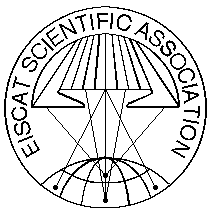
November 5 - 9, 2012, Brussels, Belgium
Solar Variability Effects on Climate
| Session: | Session 3a Solar Variability Effects on Climate |
| Date: | Wednesday 7 November 2012 |
| Chair: | T. Dudok de Wit (Univ. Orléans) & K. Matthes (GEOMAR) & W. Schmutz (PMOD) |
| Remarks: |
10:30-10:45 Splinter wrap up
10:45-11:30 Coffee Break & Poster Session 12:30-14:00 Lunch |
| Time | Title | ||
| 09:00 |
Space weather at Mars: a major Driver for its Climate?
Leblanc, Francois LATMOS, FRANCE Mars' climate has changed significantly since 4.5 Gyr ago. Many geological, minearological and atmospheric observations suggest that Mars should have hosted, during parts of its history, a much denser and wet atmosphere that at present. During the early age of the solar system, Mars had probably a bar size atmosphere, with a water reservoir equivalent to a 100 m water size ocean covering the whole surface, with an intrinsic dynamo probably strong enough to protect the atmosphere from any direct interaction with the solar wind and an active volcanism. Today, Mars has a mbar size atmosphere, a water reservoir of only few micro-meters, only a remanent crustal magnetic field that does not contribute significantly to Mars' interaction with the solar wind and a few Gyr old surface. What has been the fate of Mars' atmosphere and its past climate are therefore one of the main outstanding question regarding Mars. Mars' atmosphere could have escaped into the space, a possibility that will be the main objective of a US mission, MAVEN, that will be launched in 2013. Mars' atmosphere could have been also reabsorbed into the Martian crust, a possibility which was and is the subject of many Mars past and future missions including Mars Science laboratory to be launched in 2012. The role of the space weather at Mars is therefore the subject of many observations and theoretical works. In this presentation, I will summarize our present understanding of Mars' evolution, of the possible role of the Sun and how space weather at Mars is integrated in our model of Mars' past evolution. |
||
| 09:30 |
The Response of the Troposphere and Surface to the 11-yr solar cycle Variability in idealized ensemble Simulations
Misios, Stergios1; Schmidt, Hauke2; Klairie, Tourpali1 1Laboratory of Atmospheric Physics, GREECE; 2Max Planck Institute for Meteorology, GERMANY The possible influence of the 11-yr solar cycle on the coupled atmosphere-ocean system of the tropical Pacific has drawn considerable attention in the recent years. Analyses of observations and historical reconstructions detected either an El Niño-like warming or a La Niña-like cooling in solar maxima. To examine the response of the troposphere and surface to the 11-yr solar cycle we conduct idealized ensemble simulations with the middle atmosphere version of ECHAM5 coupled to two types of ocean models: a mixed layer and a full-coupled dynamical model. To ease explanations, a sinusoidal solar cycle of realistic amplitude is assumed. Our simulations do not support the notion of a La Niña excitation in solar maxima. Instead, we find that the tropical Pacific warms in solar maxima both in the mixed layer and the full-coupled ensembles, with stronger warming in the former ensemble. The tropical Pacific hydrology changes accordingly. Although the tropical upper atmosphere responds immediately to the solar forcing, the tropospheric response lags by 1 to 2 years, in rhyme with the surface response. We further discuss mechanisms whereby the simulated warming over the tropical Pacific may affect remote regions as the North Atlantic Ocean and Europe. There, the full-coupled ensemble successfully captures the solar cycle signals detected on proxy-based surface temperature reconstructions. |
||
| 09:45 |
Cosmic Ray induced aerosol Formation in Earth's aAmosphere
Jens Olaf Pepke, Pedersen Danish Technical University, DENMARK Cosmic rays penetrating Earth's atmosphere produces ions which can enhance nucleation as shown by theory, observations, and experiments, but the exact mechanism still remains to be determined. In particular nucleation of the dipolar sulfuric acid - water system has been investigated since ion-induced nucleation is expected to increase the nucleation rate at the critical cluster size, where the charge makes the small clusters more thermodynamically stable than their neutral counterparts and thus reduces the energy barrier to nucleation. Also the initial growth rates of small ion clusters are found to be enhanced by the dipole-charge interaction between the core ion and the strongly dipolar condensing sulfuric acid and/or water molecules. In the initial phase these ion-molecule interactions greatly accelerate the kinetics of molecular association. During the later stages of aerosol growth (from 2-3 nm and larger) the effect of the ion is expected to become small and the growth rate will be dominated by the vapor pressure of the condensing species. We have studied ion-induced nucleation of the sulfuric acid - water system under a variety of conditions from an ultra-low background radiation environment 1100 meter underground to ionization densities far above the natural levels found in the atmosphere using a particle accelerator. Together with recent advances in modeling this has increased our understanding of the nucleation mechanism and the role of ions. |
||
| 10:00 |
Testing a Link between cosmic Rays and Cloudiness over daily Timescales
Čalogović, Jaša1; Laken, Benjamin2 1Hvar Observatory, Faculty of Geodesy - University of Zagreb, CROATIA; 2Instituto de Astrofísica de Canarias, SPAIN Much debate still remains regarding a hypothesized link
between the solar-modulated cosmic ray (CR) flux and the Earth's cloud
properties influencing the climate. Recently, it was shown that
numerous long-term studies of satellite-based cloud observations are
limited by non-trivial disadvantages, such as: satellite data
intercalibration issues, view-angle biases, and the influences of
factors on cloud cover like ENSO and volcanic eruptions interfering
with the analyses. |
||
| 10:15 |
Response of the fair weather electrical Current to geomagnetic Substorms at a desert Station in southern Israel
Yair, Yoav1; Price, Colin2; Elhalel, Gal2; Halatzi, Shy2 1The open Unviersity of Israel, ISRAEL; 2Tel-Aviv Uniersity, ISRAEL The global electrical circuit (GEC) postulates a constant downward flowing conductance current (Jz) equal to ~2 pA m-2 (Williams, 2009). Continued measurements of the vertical fair-weather atmospheric electrical current have been carried out from May 2011 continuously at Tel-Aviv University's Wise astronomical observatory in the Negev desert, Israel (30° 35' 45" N, 34° 45iä 48" E, altitude 875m above sea level). The instrument we used is a modified version of the GDACCS design described by Bennet and Harrison (2008) which is capable of measuring the fair-weather current density with an accuracy of 0.4 pA m-2. The sensors are placed on a flat 1.5m x 1.5m concrete surface 150m away from the observatory. The signal is passed in a differential mode to the computer at the observatory, sampled at 250Hz by the data acquisition program (LabView) and saved to 1 minute files with a GPS time stamp every 1 second. In addition to the Jz we collect ELF data in the Schumann Resonance band, and record the vertical component of the electrical field and the NS and EW magnetic field components with an accuracy better than 0.1 pT. While we easily note a diurnal variation in Jz, dictated by the local meteorological conditions such as wind speed, relative humidity and dust concentrations, there are some clear anomalies which differ from background conditions. We report preliminary indications for a response in Jz to changes in geomagnetic conditions during storms induced by solar flares, as evident from the correlation we find between fluctuations in Jz and the flux of solar protons >10 MeV in solar quiescent and storm conditions. Large values of the variance of the conductance current were observed during 3 different Coronal Mass Ejections, which included solar proton events (SPE) on 26/09/2011, 25/10/2011 and 08/03/2012. We infer this behavior as a response of the global electrical circuit to solar activity leading to enhancement of the ionospheric electric field, as suggested by Belova et al. (2001).
Belova, E., S. Kirkwood and H. Tammet (2001), The
effect of magnetic substorms on near-ground atmospheric current. Annal.
Geophys., 18, 1623-1629. |
||
| 11:30 |
Solar variability Effects on Climate
Beer, Juerg Eawag, SWITZERLAND It is well accepted that the Sun is the engine which drives
the climate system. It is also well known that the Sun is variable
star. This raises the important question to what extent solar
variability causes climate change. This question is still
controversially debated. Some people believe that solar forcing is a
dominant factor while others claim that its effect on climate is
negligible. |
||
| 12:00 |
Solar Irradiance in cycle 23:
Modelling of TSI and SSI by synoptic intensity Observations
Ermolli, Ilaria1; Criscuoli, Serena2; Giorgi, Fabrizio3 1INAF OAR, ITALY; 2National Solar Observatory, UNITED STATES; 3INAF Osservatorio Astronomico di Roma, ITALY An apparently unusual behaviour of the Total Solar Irradiance (TSI) during the last solar minimum, together with unexpected trends of the spectral irradiance variations measured over the declining phase of the last solar cycle, and the registered failure of some irradiance models to reproduce TSI measurements have been interpreted as new evidences of a fraction of the measured solar irradiance variability unexplained by the evolution of surface magnetism. On the other hand, newest results put the responability of these inconsistencies to calibration problems of both total and spectral irradiance measurements. We use the synoptic full-disk observations carried out with the PSPT telescopes and results of the spectral synthesis performed on semi-empirical atmospherical models to reconstruct measurements of both TSI and SSI variations from 1997 to 2012. We also investigate the contribution to the measured iirradiance variations of the various solar features resolved on PSPT observations. |
||
| 12:15 |
What can we learn about the Sun with PREMOS/PICARD?
Shapiro, Alexander; Cessateur, Gaël; Schmutz, Werner; Tagirov, Rinat PMOD/WRC, SWITZERLAND The spectral solar irradiance is a key input parameters to atmospheric/oceanic and space weather models. It varies on time scales ranging from minutes to millennia, and its variability is strongly wavelength-dependent. Despite many efforts, a complete picture of the solar irradiance variability is still missing. The data from the recent European mission PICARD with PREMOS package onboard provides therefore valuable information and is able to nourish theoretical models. This instrument covers the solar spectrum from the UV to near-infrared. The PREMOS measurements were carefully corrected for the degradation and cleaned for non-solar signatures. We provide a comparison with the VIRGO/SOHO and SOLSTICE+SIM/SORCE data. We employ the recently developed and published COde for Solar Irradiance (COSI) to model the solar variability as observed by PREMOS. We discuss different physical mechanisms which are responsible for formation of the solar spectrum at different wavelengths. The comparison between PREMOS measurements and COSI calculations is used to test and constrain the existing models of the solar atmosphere. |
||
|
|






